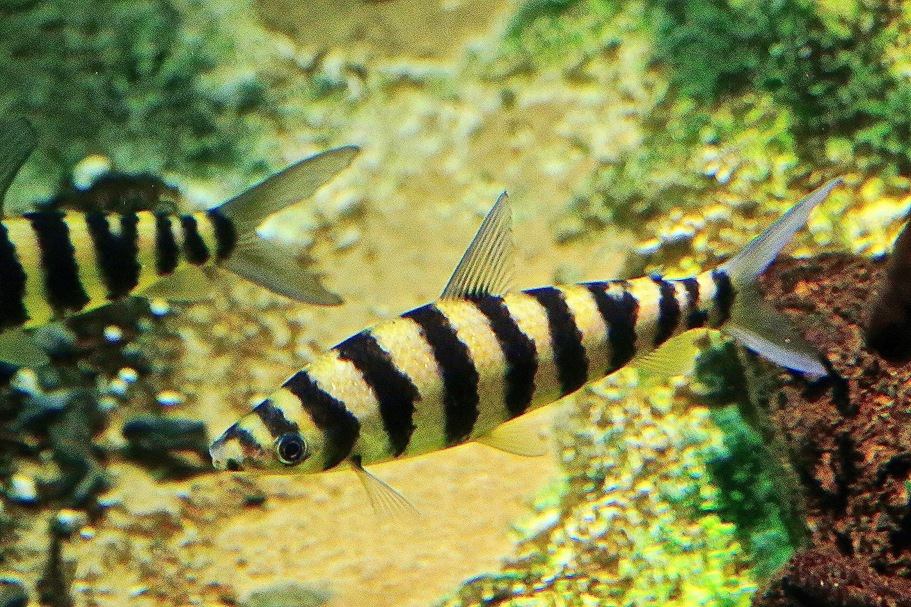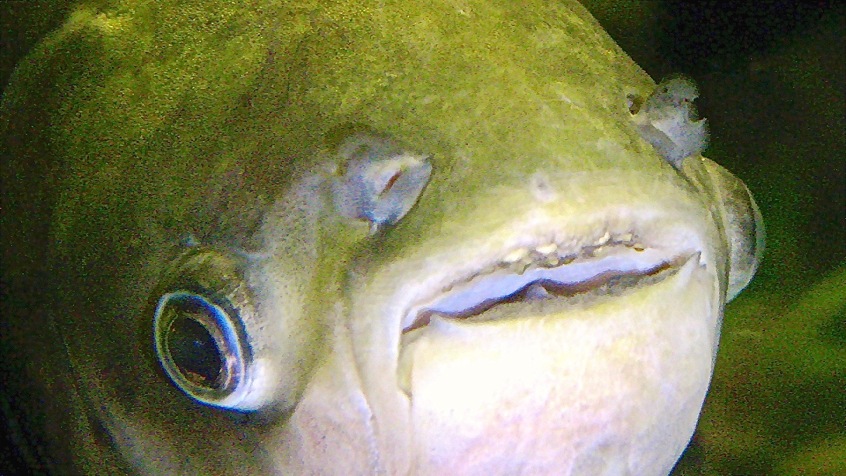TAXONOMY
Kingdom: Animalia
Phylum: Chordata
Class: Actinopterygii (ray-finned fishes)
Order: Scorpaeniformes (Scorpionfishes and flatheads)
Family: Cyclopteridae (Lumpfishes)
Genus/species: Eumicrotremus orbis
GENERAL CHARACTERISTICS: The globular shaped body is covered in cone-shaped plates, called tubercles. Females are dull green in color, while males are dull orange to reddish-brown.
Typically measures 1 to 3 inches (2.5 to 7.6 cm) in length, with a maximum length of 7 inches.
The Pacific Spiny Lumpsucker’s anal fin has evolved into a large suction cup, allowing it to attach to surfaces. They are most commonly found attached to solid objects and are ineffective swimmers.
Distribution: North Pacific: From Japan to Alaska south to Puget Sound, Washington.
Habitats, include eelgrass beds, rocky reefs, kelp patches, shallow bays, and docks. They can be found in near shore waters to a depth of 500 feet (150 m).

DIET: Crustaceans and mollusks.
REPRODUCTION and DEVELOPMENT: Males guard eggs following spawning.
CONSERVATION IUCN NOT EVALUATED
REMARKS: The large adhesive sucking disc with thickened fringed margin is composed of modified and ossified pelvic rays. When disturbed, the fish hovers about, changing directions aimlessly like a tiny helicopter.
The family name Cyclopteridae translates from Greek as “circle wing,” a reference to their circle-shaped pectoral fins. Their roe is used as a substitute for expensive and/or unavailable caviar.

References
California Academy of Sciences, Steinhart Aquarium, locomotion, 2018
Ron’s flickr sitehttp://www.flickr.com/photos/cas_docents/sets/72157608359804936/
Ron’s WordPress short link http://wp.me/p1DZ4b-kw
fishbase www.fishbase.de/summary/Eumicrotremus-orbis
Eschmeyer, W.N., E.S. Herald and H. Hammann, 1983. A field guide to Pacific coast fishes of North America. Boston (MA, USA): Houghton Mifflin Company. xii+336 p. (Ref. 2850)
(formerly on Academy staff)































